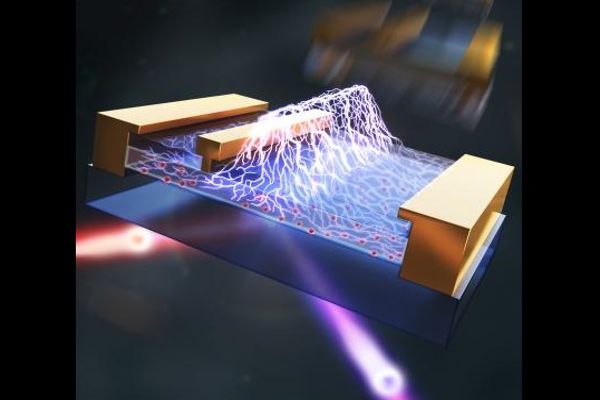According to scientists, a scientific breakthrough could make our electronic devices faster, more reliable, and significantly less power hungry, paving the way for a less polluting future for our species. Researchers at the University of Bristol have developed a method that will enable faster communication systems and more energy-efficient electronics.
For the first time, researchers were able to remotely measure the electric field inside a semiconductor device. A semiconductor is a material, such as silicon, that can be used to control electric current in electronic devices.
Now, in a new study published today in Nature Electronics, scientists outline how to precisely quantify this electric field, implying that next generation power and radio frequency electronic devices with the potential to be faster, more reliable, and more energy efficient can be developed.
Semiconductor device design can be trial and error, but it is more commonly based on a device simulation, which then serves as the foundation for manufacturing semiconductor devices for real-world applications. When it comes to new and emerging semiconductor materials, it is often unclear how accurate and correct these simulations are.
Researchers have discovered a method which will allow for faster communication systems and better energy saving electronics.
“Semiconductors can be made to conduct positive or negative charges and can thus be designed to modulate and manipulate current,” said Prof Martin Kuball of the University of Bristol’s School of Physics. These semiconductor devices, however, do not stop with Silicon; there are many others, such as Gallium Nitride (used in blue LEDs for example). These semiconductor devices, which, for example, convert an alternating current from a power line into a direct current, result in a loss of energy as waste heat — consider your laptop’s power brick, which is getting warm or even hot. We will save energy if we can improve efficiency and reduce waste heat.
“When a voltage is applied to an electronic device, an output current is produced that is used in the application. There is an electric field inside this electronic device that determines how it works, how long it will be operational, and how well it will operate. No one was able to measure the electric field, which was critical to the device’s operation. One has always relied on simulation, which is difficult to trust unless its accuracy can be tested.”

To create high-performance, long-lasting electronic devices from these new materials, researchers must find the optimal design in which electric fields do not exceed a critical value, resulting in degradation or failure. Experts intend to use newly emerging materials such as Gallium Nitride and Gallium Oxide instead of Silicon, allowing for higher frequency and higher voltage operation, respectively, allowing for new circuits with lower energy loss.
The University of Bristol group’s work, which was recently published, will provide an optical tool for measuring the electric field directly within these new devices. This will serve as the foundation for future efficient power electronics in applications such as solar or wind turbine stations feeding into the national grid, as well as electric cars, trains, and planes. Reduced energy loss implies that societies do not require as much energy in the first place.
Professor Kuball stated: “Because these devices are operated at higher voltages, the electric fields in the devices are also higher, which means they can fail more easily. The new technique we developed allows us to quantify electric fields within devices, allowing for accurate calibration of device simulations, which in turn allows us to design electronic devices so that the electric fields do not exceed critical limits and fail.”
Prof. Kuball and his colleagues intend to collaborate with key industry stakeholders to apply the technique to advance device technology. Within an academic context, they will collaborate with partners in the $12 million US Department of Energy (DOE) ULTRA center to use this technique to make ultra-wide bandgap device technology a reality, allowing energy savings of more than 10% worldwide.
“This advancement assists the United Kingdom and the rest of the world in developing energy-saving semiconductor devices, which is a step toward a carbon-neutral society,” he added. The technique was created as part of a project funded by the Engineering and Physical Sciences Research Council (EPSRC).















